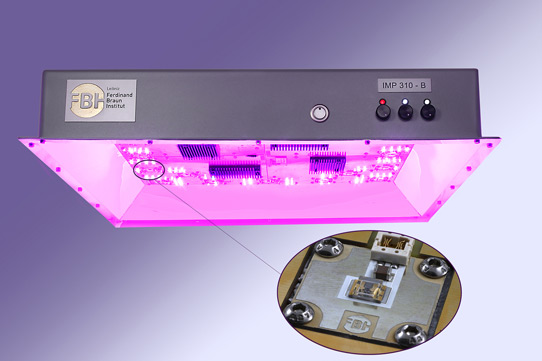- News
12 April 2018
FBH presents UV LED chip and module developments at ICULTA-2018
© Semiconductor Today Magazine / Juno PublishiPicture: Disco’s DAL7440 KABRA laser saw.
At the International Conference on UV LED Technologies & Applications (ICULTA-2018) at the MELIÃ hotel in Berlin, Germany (22-25 April), Berlin-based Ferdinand-Braun-Institut, Leibniz-Institut für Höchstfrequenztechnik (FBH) and its spin-off UVphotonics NT GmbH are giving several invited talks as well as being present in booths at the accompanying exhibition.
Progress in development for industrial applications
Increased efficiency and output power are making UV LEDs more attractive for a constantly growing number of applications including disinfecting water, air and surfaces, detecting pathogenic germs and curing of synthetic materials.
FBH and UVphotonics report on progress in UV LED efficiency and reliability. This includes identifying a degradation mechanism that points to operation-induced electro-migration of hydrogen in the UV-B LED structure during the first hours of operation, which is accompanied by a drop in optical output power. After respective design adjustments, UV-B LEDs with L50 lifetimes of 8000 hours can be demonstrated. Optimization of the devices has led to further improvements in reliability, with much longer L50 lifetimes expected. In addition, their output power at 350mA can be increased to 30mW. Methods to increase internal quantum efficiency and for efficient light extraction have also been investigated in detail.
At the conference, FBH is also presenting a compact diode laser-based light source for the deep UV spectral range with an emission wavelength of 222nm, and hence in a region difficult to access with LEDs. The device converts the light of a GaN-based high-power diode laser into the UV spectral range via frequency doubling (single pass) and offers the potential for miniaturization. The wavelength-stabilized, narrow-band light source is particularly suited to spectroscopy applications, such as absorption and Raman spectroscopy applied in medical diagnostics but also in substance analysis.
From customized housings to ready-to-use modules
FBH also develops the optimum package for each application and, supported by its Prototype Engineering Lab, even complete modules tailored precisely to fit the range of use. For one of its research partners, for example, FBH has developed and realized several illumination systems that irradiate plants with LED light of specific wavelengths. The proportion of health-promoting secondary plant metabolites can hence be systematically enhanced. For use in greenhouses, UV LEDs need to be protected by special packages against enhanced degradation caused by the warm and humid environment. At its exhibition booth, FBH is displaying one of these plant illumination modules along with a small water disinfection system.

Graphic: UV-B LED module for plant illumination, providing LED light of three different wavelengths. Brightness and irradiation intensity can be adjusted individually to determine optimum irradiation for structurally diverse vegetable secondary metabolites. Inset: UV-B LED.
FBH involvement in conference
ICULTA-2018 is jointly organized by the International Ultraviolet Association and ‘Advanced UV for Life’, an FBH-managed consortium bringing together 50 partners from research and industry. Conference co-chair is professor Michael Kneissl, who is head of the Joint Lab GaN Optoelectronics (jointly operated by FBH and TU Berlin). The chair of the program committee is professor Markus Weyers, head of FBH’s Materials Technology Department.


